Typical development, phonetics, and foundations - comps
1/125
There's no tags or description
Looks like no tags are added yet.
Name | Mastery | Learn | Test | Matching | Spaced |
|---|
No study sessions yet.
126 Terms
Perlocutionary
Unintentional communication
0-8 months
Illocutionary
Intentional communication
9-12 months
Perlocutionary period
Reflexive vocalizations (0-2 months)
Sounds reflect automatic responses of body
Defined by anatomy of child (e.g., burping, crying, etc.)
Nasalized vowel-like sounds with minimal resonance
Cooing (2-4 months)
Sound made in the back of mouth
Back vowels /u, o, a/ and consonants /k, g, ng, u/
Vocal Play (4-6 months)
raspberries, growls, squeaks
Begin to see CV syllables
Babbling (6+ months)
Reduplicated babbling - CVCV syllable chaing (e.g., “dada”)
Variegated babbling - CV chains (with variations in C’s and V’s) (ex - bagala)
Illocutionary period
Emergence of Speech Patterns (9+months)
Jargon, longer strips of variegated babbling
babbling is accompanied by sentence like intonation patterns
Phonetically Consistent Form (PCFs)
Phonetically Consistent Forms (PCFs)
Word like vocalization that a child uses consistently to refer to the same object or action
(ex- gaga = bottle always)
Brown’s Stages
- 12 -26 months
About 50 words in vocabulary
Basic Phrases (with communication intent)
27-30 months
Present progessive - ing
“in” and “on”
Regular plural -s
31-34 months
Irregular past tense
Possessive’s
Uncontractible copula
35-40 months
Articles (a, the)
Regular past tense
Third person regulars present tense
41-46+ months
Third person irregular
Uncontractible auxiliary
Contractible copula
Contractible auxiliary
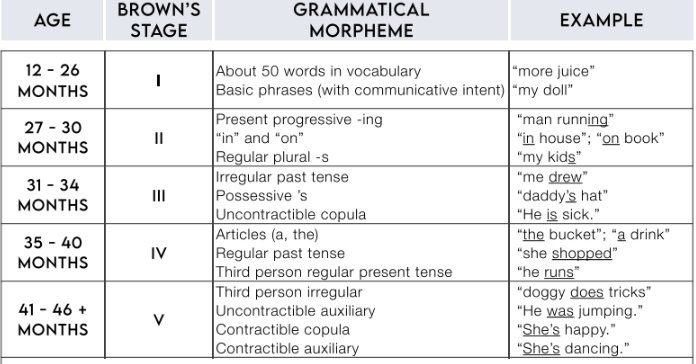
Uncontractible copula
verb can’t stand alone it is also the main verb
(ex - He is sick).
Uncontractible auxiliary
It is the secondary verb
Ex - (She is dancing)
Contractible copula
Ex - She’s happy
Where you can do ‘s (same definition tho)
Contractible auxillary
Ex- She’s dancing (same definition)
Bound morphemes
Bound morphemes
Cannot stand alone; must attach to a free morpheme.
Examples:
Prefixes: un- (unhappy), re- (redo)
Suffixes: -s (cats), -ed (jumped)
Free Morphemes
1. Free morphemes
Can stand alone as a word.
Examples: cat, run, happy, book
Mean Length of Utterance
MLU - Average number of morphemes per utterance
mlu = total # of morphemes/total # of utterances
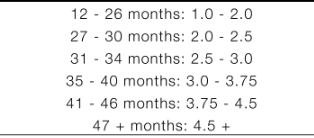
White matter =
White matter = cortical changes
any change in the structure or function of the cerebral cortex
Gray matter =
Gray matter = Volume loss
Presbycusis
Age related hearing loss
Sensorineural hearing loss ( inner ear cochlea/auditory nerve)
high frequency loss (hair cell damage)
Presbyopia
age related vision loss
farsightedness
treatment: reading glasses
Presbyphonia
age-related voice changes
weaker, breathy voice; more break/stops
higher pitch in men, lower pitch in women
reduced loudness, laryngeal (voice box) tension, tremor
Presbyphagia
age-related swallow changes
decreased strength and sensation (taste)
slower swallow response
laryngeal penetration is more common
Cortical changes
General slowing of motor skills
voice changes
smaller, slower, more fatigued muscles
other health issues exacerbate(worsen) motor

Volume loss
Slowed processing
language typically remains intact
difficulty recalling new info/specific details
difficulty with multitasking/executive funtion
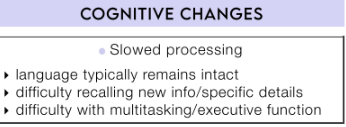
Language
social, rule-governed tool used to send and receive messages
Receptive language
Language comprehension
listening and reading
develops before expression
understanding of language
vocabulary, questions, concepts, directions
Expressive Language
Language production
Speaking and writing
Expression of wants and needs
words, nonverbal communication
gestures, pointing, expressions, grammar
Form
how words and sentences are structured
Phonology - speech sounds
Syntax - Sentence structure and word order
Morphology - word endings (smallest unit)
Content
the meaning of language
Semantics - word meanings
vocabulary
how word meanings link
Use
how language is used in social contexts
Pragmatics: social rules
Matching language and situations
Nature (Nativist - Generative View)
Chomsky
language is innate and pre-specified
we are born with LAD (acquisition device)
language is separate from other cog. systems
Nurture
(Constructionist-Interactionist View)
Vygotsky
Environment guides language
no processor in brain specific for language
can’t separate language from cog. systems
Limitations of nativist view
non-literal language (i.e., idioms); strict focus on syntax; no single grammar to account for all languages
No evidence that children's need adult-like rules to acquire language
Evidence for nature
deaf babies babble; speech and language deficits may be inheritable
children follow sequence of developmental milestones
language aspects learned without direct instruction (e.g., grammar rules)
we are born with a Language Acquisition Device (LAD) which determines how we learn language
Evidence for Nurture
Operant conditioning
-A learning process in which behavior is shaped by consequences.
Positive reinforcement: Adding something pleasant to increase a behavior.
Example: Giving a child a sticker for saying a new word.
Negative reinforcement: Removing something unpleasant to increase a behavior.
Example: Turning off a loud noise when a child follows a command.
Punishment: Adding or removing something to decrease a behavior.
Example: Taking away a toy when a child throws it.
Cognitive Theory
Piage
Children learn language like other cognitive skills (concepts first, then language)
Language is made possible by cognition and other intellectual processes
Observe child in play to determine level of representaional thought
Semantic Theory
Filmore, Bloom
Interpretation of messages requires consideration of meaning
acquisition stimulated by child’s desire to communicate and knowledge
Behavioral Theory
Skinner
Children learn language through conditioning (only when they are exposed to)
Stimulus-response drives language acquisition; drill and practice - reinforcement
Social Interactionism
encourage social interactions; desire to communication and use drives acquisition
Incorporate caregivers and multiple environments into learning
Emergentist Theory
data and pattern driven, child’s ability to use cues develops over time
neurologically based
Critical period hypothesis
must have adequate stimuli before “critical age” (5-7 years old) or full language command cannot be achieved
Phonology
shortest optimial/critcal period
need exposure to phonology in first years of life to have native accent
Classification: Consonantal sounds (in English) are classified by 3 dimensions
Voice
Place
Manner
Voice
Activity of vocal cords
Voiced
Voiceless
Place
Point of contact where sound is produced
Bilabial
Labiodental
Interdental
Alveolar
Palatal
Velar
Glottal
Manner
configuration and interaction between articulators
Stop
Fricative
Affricate
Nasal
Liquid
Glide
Phonemes developed (Early 8 year)
Early 8 sounds: /m, b, j, n, w, d, p, h/ → usually mastered by 3 years
How to remember phonemes development (early 8 year)
A mnemonic device can help recall the Early 8 phonemes: "My Big Juice Needs Water, Delicious Peaches Help" represents /m, b, j, n, w, d, p, h/.
Phonemes developed (Middle 8 year)
Middle 8 sounds: /t, ŋ, k, g, f, v, tʃ, dʒ/ → usually mastered by 4–5 years
How to remember phonemes development (Middle 8 year)
A useful mnemonic for the Middle 8 phonemes is "Tigers and Kittens Give Fun Very Cheerful Joy," representing /t, ŋ, k, g, f, v, tʃ, dʒ/.
Phonemes developed (Late 8 year)
Late 8 sounds: /ʃ, θ, s, z, ð, l, r, ʒ/ → usually mastered by 5–7 years
How to remember phonemes development (Late 8 year)
A helpful mnemonic for the Late 8 phonemes is "Shy Tiny Tiny Snakes Lick Zebra's Runny Jelly," representing /ʃ, θ, s, z, ð, l, r, ʒ/.
Bilabial place of articulation
Both lips

Labiodental place of articulation
upper front teeth + lower lip
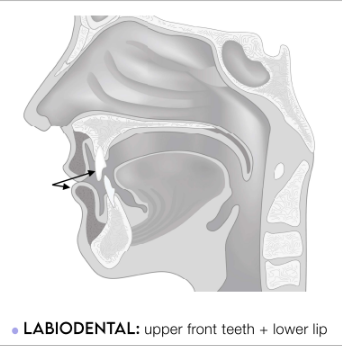
Interdental place of articulation
tongue tip near/between teeth
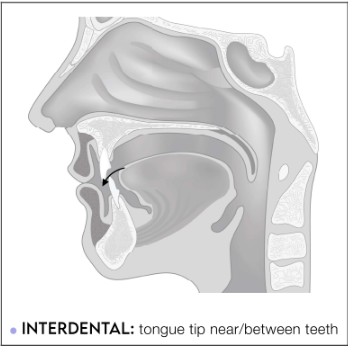
Alveolar place of articulation
tongue tip on/near tooth ridge

Palatal place of articulation
tongue body to hard palate
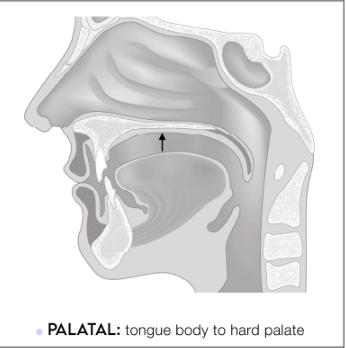
Velar place of articulation
tongue body on/near soft palate
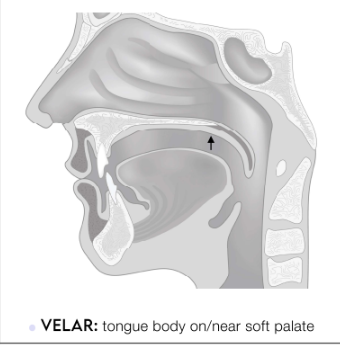
Glottal place of articulation
made in throat, between vocal folds
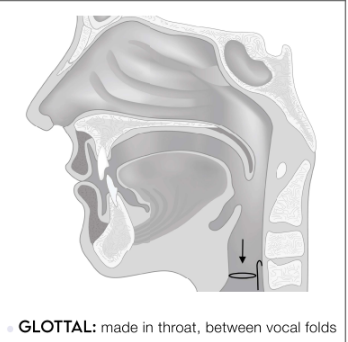
/p/
voiceless
stop
bilabial
/b/
voiced
bilabial
stop
/m/
voiced
bilabial
nasal
/w/
voiced
bilabial
glide (A glide is a sound made by moving the tongue quickly from one position to another.)
/f/
voiceless
labio-dental
fricative
/v/
voiced
labio-dental
fricative
/θ/
voiceless
inter-dental
fricative
/ð/
voiced
inter-dental
fricative
/t/
voiceless
alveolar
stop
/s/
voiceless
alveolar
fricative
/d/
voiced
alveolar
stop
/z/
voiced
alveolar
fricative
/n/
voiced
alveolar
nasal
/l/
voiced
alveolar
liquid
/ʃ/
voiceless
palatal
fricative
/tʃ/
voiceless
palatal
affricate
/ʒ/
voiced
palatal
fricative (A fricative is a sound made by squeezing air through a small gap, causing a hissy or noisy sound.)
/dʒ/
voiced
palatal
affricate
/r/
voiced
palatal
liquid
/j/ or the y sound
voiced
palatal
glide (A glide is a sound made by moving the tongue quickly from one position to another.)
/k/
voiceless
velar
stop
/g/
voiced
velar
stop
/ŋ/
voiced
velar
nasal
/h/
voiceless
glottal
fricative
Source-Filter Theory
sound source filtered and shaped by resonant vocal tract
Source–Filter Theory says that your voice starts as a buzzing sound from the vocal folds (source), and then your vocal tract shapes that sound into speech (filter).
Explain the process of Source-Filter Theory
✅ 1. Sound Source
Speech sounds come from two possible sources:
A. Glottal Source
Comes from the vocal folds vibrating in the larynx.
Produces a voiced sound.
This is the primary source for:
Vowels
Sonorants (nasals, liquids, glides)
Voiced consonants (/b, d, g, v, z/)
Example:
For /a/ → vocal folds vibrate → glottal source.
B. Supraglottal Source
Comes from turbulence or blockage above the vocal folds.
Produced in the vocal tract, not at the glottis.
This is the source for:
Voiceless fricatives (/s, f, ʃ/) → turbulence
Voiceless stops (/p, t, k/) → burst release
Affricates (/tʃ, dʒ/) → stop + fricative combo
Example:
For /s/ → no vocal fold vibration → noise created at the alveolar ridge → supraglottal source.
✅ 2. Filter
After the sound source is created, it is shaped by the filter:
A. The Vocal Tract
This is the entire filter. It splits into:
1. Oral Tract
Mouth: tongue, lips, jaw, palate
Shapes vowels and most consonants
Determines place of articulation (bilabial, alveolar, velar, etc.)
2. Nasal Tract
When the velum is lowered, sound flows into the nose.
Used for nasal sounds (/m, n, ŋ/).
Filter = changes the resonances.
Different shapes → different formants → different phonemes.
✅ 3. Speech Sounds: Distinctive Features
Distinctive features = the tiny properties that describe how a sound is made.
They help distinguish one phoneme from another.
Common distinctive features:
A. Voicing
+voice → glottal source (vocal fold vibration)
–voice → supraglottal source only
B. Nasal
+nasal → velum lowered, nasal filter used (/m, n, ŋ/)
–nasal → oral-only sounds
C. Continuant
+continuant → airflow continues (vowels, fricatives, glides)
–continuant → complete blockage (stops)
D. Place features
Labial → bilabial, labiodental
Coronal → alveolar, palatal
Dorsal → velar
E. Manner features
Stop, nasal, fricative, affricate, liquid, glide
Distinctive features link directly to how the source + filter operate.
⭐ Putting it all together in one simple summary:
Sound source is either:
Glottal (vocal fold vibration)
Supraglottal (noise from constriction or bursts)
Filter is the vocal tract:
Oral tract → most sounds
Nasal tract → nasal consonants
Distinctive features describe how the sound is created:
Voicing, place, manner, nasality, continuancy, etc.

Sonorants
produced with uninterrupted air (no hiss noise - smooth and resonant)
Consonatal
Partial or complete obstruction of airflow
Continuants
flow of air is not blocked at any point (that hissing noise like in ssssss)
Sibilants
high frequency “hissing” sounds, air forced through narrow openingS
Stridents
produced with constriction, airstream hits 2 surfaces (intense noise)
Obstruents
Produced by some type of air obstruction/constriction
Stops
complete vocal tract closure (pressure build up) - sudden releaseF
Fricatives
Partial blockage of vocal tract, air forced through narrow channel
Affricates
start as stop (air builds up), releases through narrow channel (fricative)
Nasals
velum lowers and airflows through nasal cavity (closure of oral cavity)L
Liquids
airstream flows around sides of the tongue (tip to mid alveolar ridge)
Glides
consonants with no stop or friction
Physiological Continuum of Speech Sounds (Vocal Tract)
This refers to the idea that speech sounds can be arranged on a spectrum based on how open or closed the vocal tract is during their production.
It’s a continuum from most open to most constricted.

Physiological Continuum of Speech Sounds (Vocal Tract) - The order
Vowels/Diphthongs
Produced by selectively amplifying open vocal
F1 and F2 are important for perception
Classified as: front, central, back + high, middle, low
Liquids/Glides
Produced with some constriction (oral semi-vowels, vowel-like)
Liquids: /r/ (palatal retroflex); /l/ (alveolar, only lateral in English)
Glides: /j/ (palatal, high tongue); /w/ (starts at high back position)
Nasals
Produced by occlusion of vocal tract and an open nasal
air flow through nasal cavity
lower resonant frequencies; reduced intensity (nasal murmur)
Fricatives
Produced by airflow through a narrow constriction
Creates turbulent noise
Obstruent sounds
Affricates
Produced by total occlusion of vocal tract and a slow release
Combination of a stop (occlusion) and fricative (narrow constriction)
may also be called semi-plosive
Stops
produced by complete blockage of airflow and a sudden release
Create a noise burst, may also be called plosive
perceived based on: frequency of burst and formant transitions
F1 and F3 (burst to vowel)

Vowel Quadrilateral
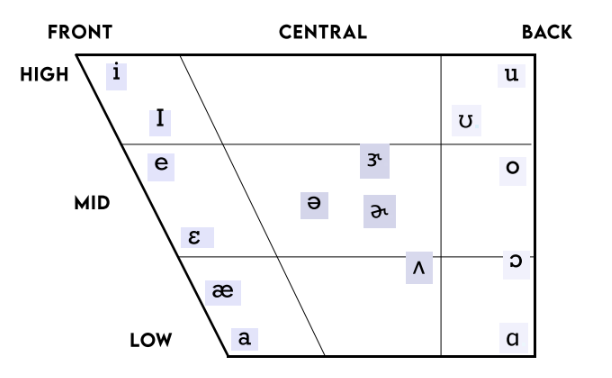
All diphthongs

Extralinguistic
everything outside of language itself that still influences communication.
These are the nonverbal things that help us communicate.
Examples of extralinguistic information:
Facial expressions
Gestures
Body language
Eye contact
Tone of voice (paralinguistics)
Physical distance (proxemics)
Simple definition:
Extralinguistic = communication beyond words.
3 subcategory
Metalinguistic
Paralinguistic
Nonlinguistic
Metalinguistic
study of language and relationship with other behaviors
Examples of metalinguistic skills:
Noticing that two words rhyme
Knowing that a sentence “sounds wrong”
Being able to define a word
Explaining what a word means
Paralinguistic
communication aspects that are not words
(ex - gestures)